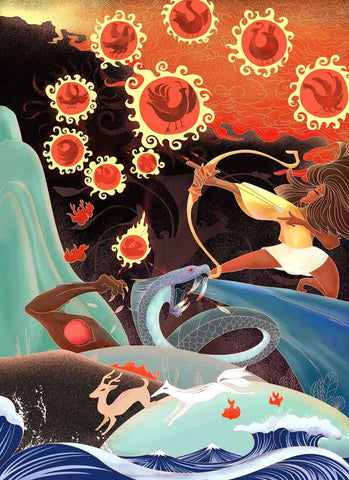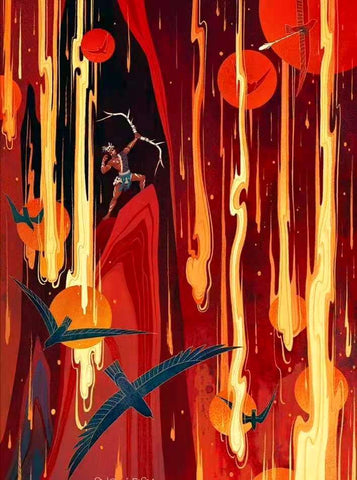Legend has it that in ancient times there were ten suns in the sky. In Tanggu where the sun rose, there was a giant tree called Fusang, the home of these suns. Every morning when the night was coming to an end, one of the suns would rise into the sky, illuminate the ground, and emit light and provide heat for the world. Ten suns rotated every day and everything was well-regulated.
Working on their posts day after day, year after year, these suns were bored bu the monotonous repetition. They thought it would be more boisterous if they went up to sky together. And so they did the next day. Like burning fireballs, the ten suns radiated exceptionally dazzling light and intense heat, far beyond what humans could bear. With such blaze, the flowers and trees were burnt do death, the rivers and lakes dried up, and many people and animals died because of hunger and drought.

Seeing this, the heaven emperor was anxious and immediately sent the sharp shooter Hou Yi drive the sun away to save people on the earth. With the red bow and several white arrows the emperor granted him, Hou Yi came to the world and found that the masses suffered great pain beyond expression, even worse then this expectation.

He thus made up his mind to punish these suns so that they could no longer harm the innocent. Then he drew the bow, fit the arrow on the string, aimed at a sun in the sky, and shot the arrow with all his might. With a whoosh, a sun fell from eh sky, turned into a few small fireballs and then quickly extinguished. In this way, another eight arrows were shot successively without a single one missing the target, and accordingly the suns fell down one by one. Hou Yi would have had the last sun shot together, but with a second thought of the consequence of having no sun, he took the bow back and back to report the progress to the emperor. All was back to normal with one sun in the sky.
Leave a comment